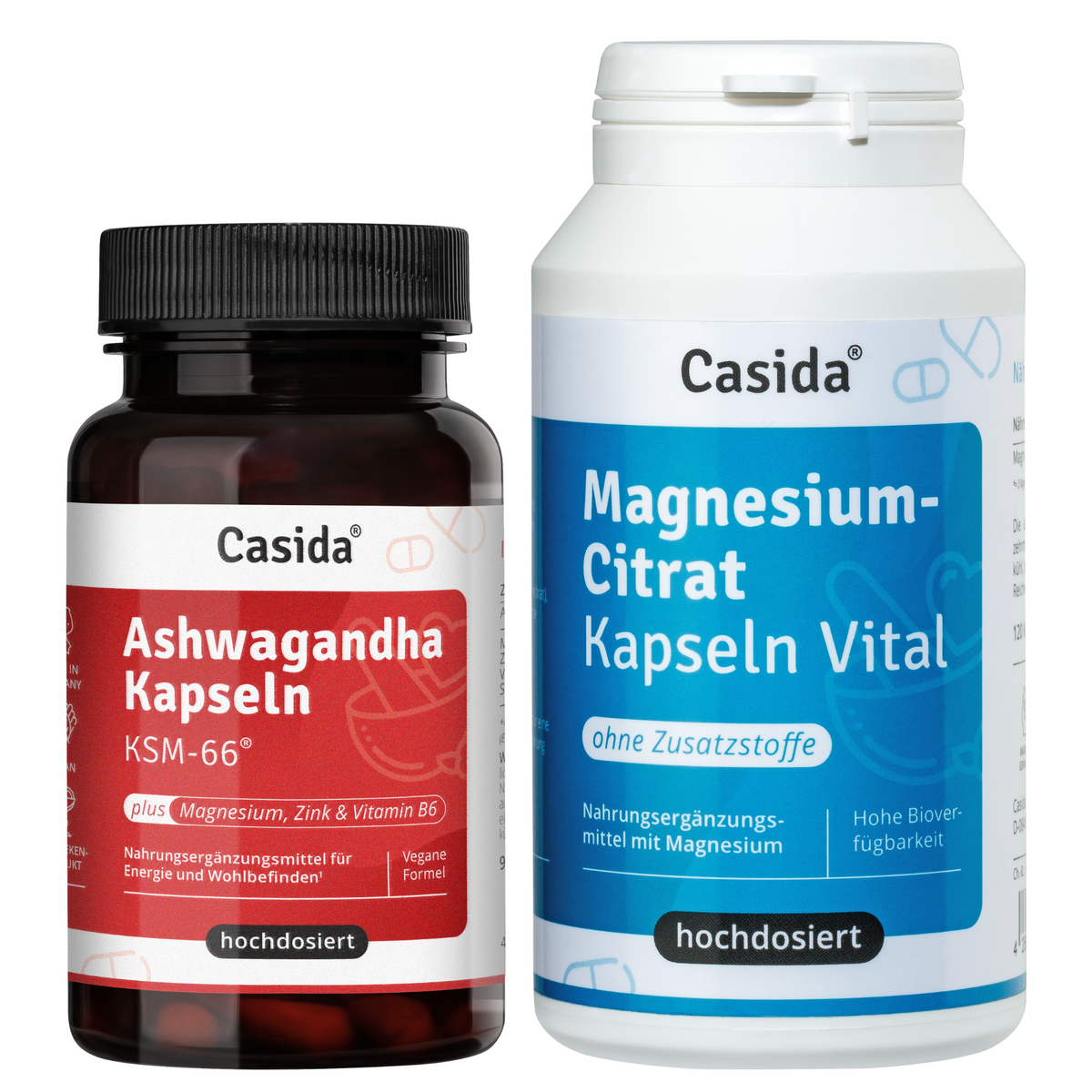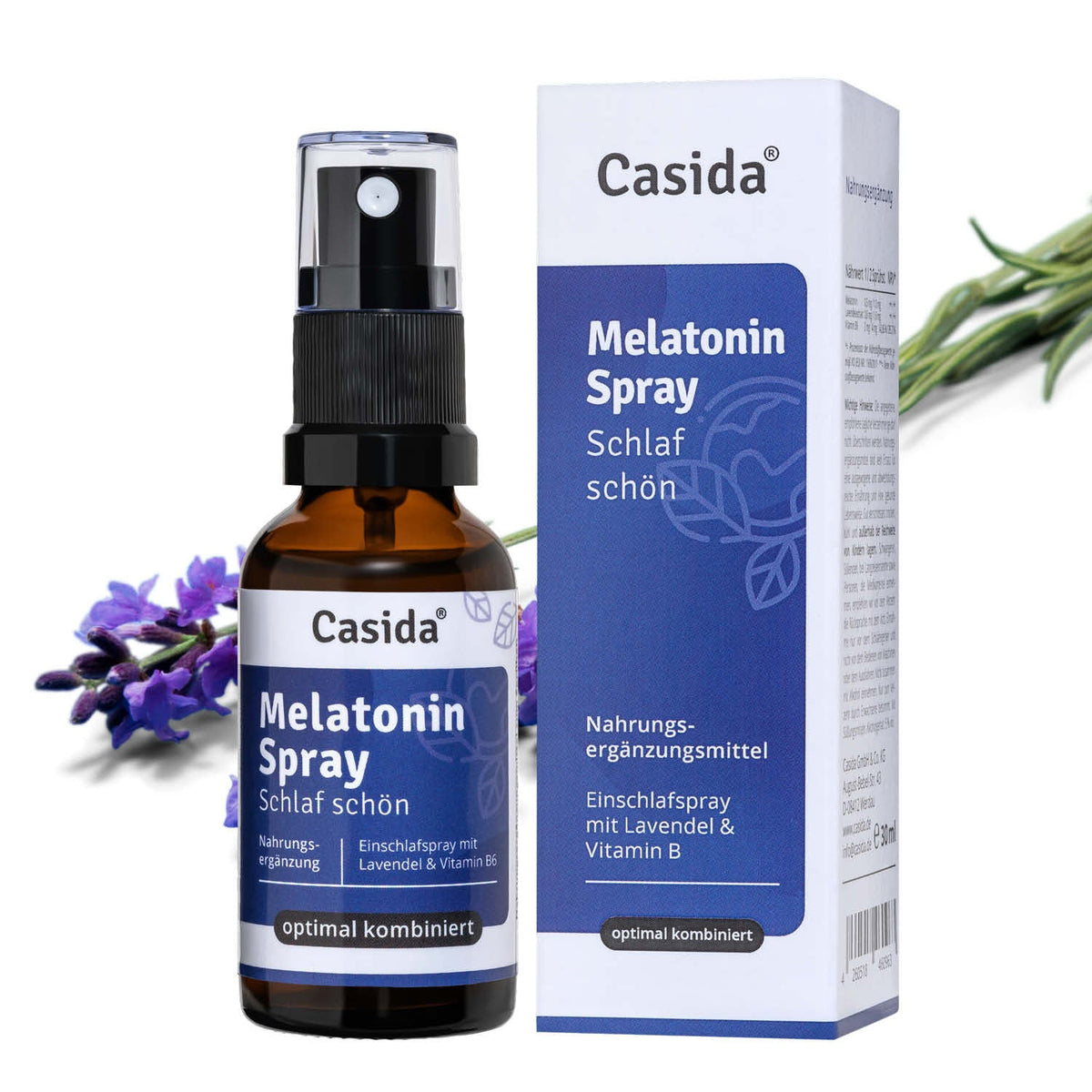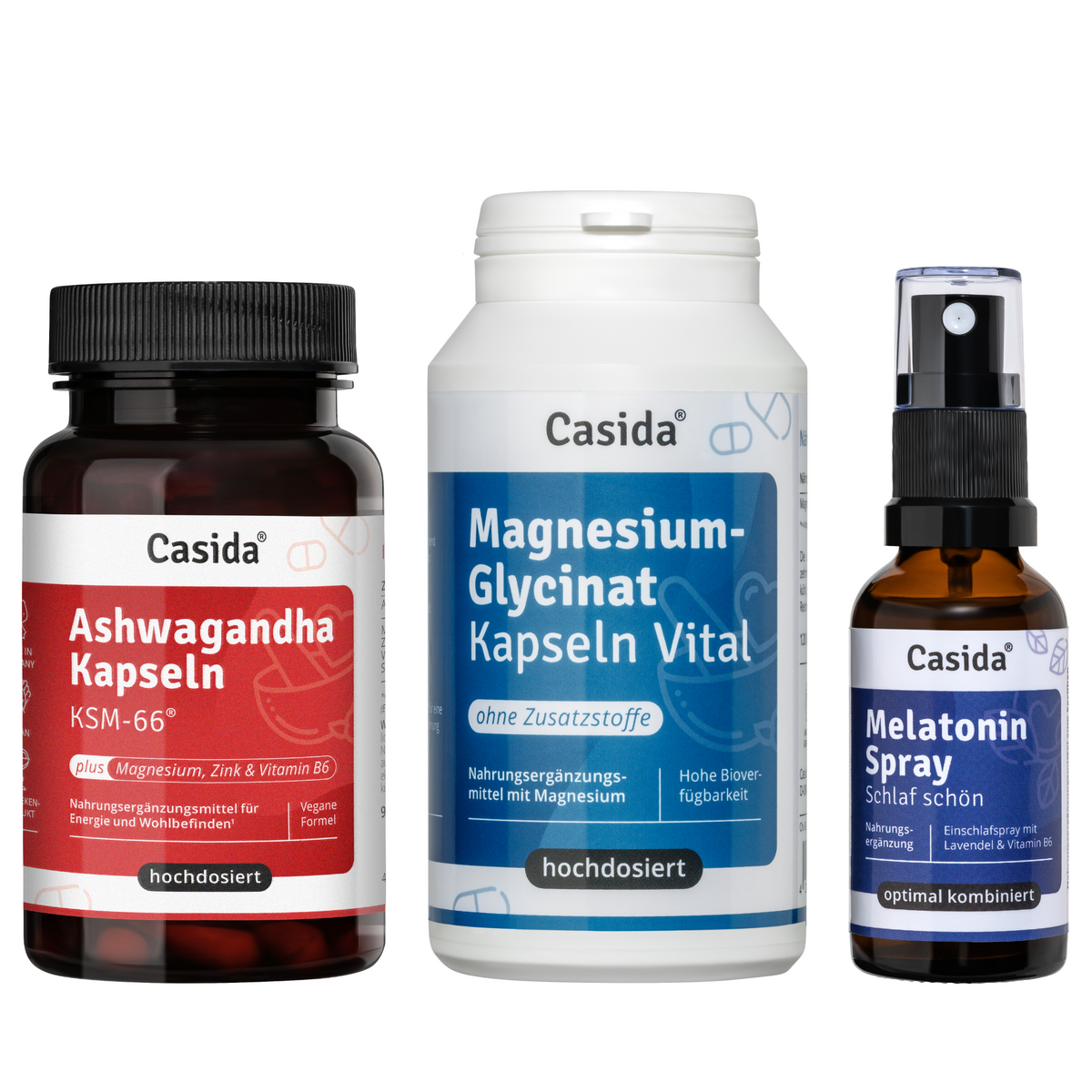The sleeping berry is one of the most important medicinal plants in the traditional Indian healing art of Ayurveda, where it has been used for over 3000 years. The small herbaceous plant has many common names. In Latin it is known as Withania somnifera and in Sanskrit as Ashwagandha. In this country it is known as winter cherry, Indian ginseng and sleeping berry. Find out more about the effects and possible uses of the sleeping berry below.
Table of contents
Where does the plant species "sleepberry" come from?
Sleepberry is a bushy plant with red, hard berries from the nightshade family. Its berries are inedible, so only the leaves and the root or root bark are actually used. The plant originally comes from Africa and Asia, where its versatile effects have been known and used for thousands of years. From these regions, ashwagandha has spread to other countries around the world and can now also be found in Europe. In addition to its versatile effects, it is also one of the most frequently used plants in Ayurvedic medicine due to its good tolerability. However, this plant is also becoming increasingly important in Europe. Ashwagandha loves sandy to gravelly soils and can grow up to 160 cm high.
What is the sleeping berry good for?
The striking red fruits of the sleeping berry may look tempting, but they are rich in alkaloids and therefore inedible. Instead, the thick brownish root with a mix of secondary plant substances and the leaves of the plant are used for health purposes. The various withanolides with the lead substances withanolide A, withaferin A and withanolide D are among the active ingredients that are of particular interest to science. Sleeping berries are also rich in secondary ingredients such as flavonoids, iron, yellow substances and saponins.
Possible areas of application for sleeping berries:
Sleep disorders
People who suffer from insomnia and sleep disorders often try various sleeping pills. However, as these are often associated with side effects, ashwagandha is an ideal herbal remedy. As its German name Schlafbeere (sleeping berry) suggests, the plant is mainly used for this problem. According to studies conducted in 2019, participants were able to fall asleep much faster after just 10 weeks and reported more restful sleep overall.
Physical and emotional stress
The stress hormone cortisol remains chronically elevated under prolonged stress and can cause numerous health problems as a result. However, the medicinal plant ashwagandha can help the body to cope better with stress. According to a study conducted in 2012, participants were found to have significantly lower cortisol levels after two months of taking a highly concentrated ashwagandha root extract. With its important ingredients, the plant adaptogen helps the body to adapt to physical and emotional stress.
States of anxiety
Several studies have shown that participants experienced a significant improvement in their symptoms after taking ashwagandha extract for several weeks.
Weakened immune system
Ashwagandha is also used as a cell-protecting tonic, which is said to boost the immune system.
Problems with the thyroid gland
Anyone who frequently suffers from tiredness and exhaustion should check whether they have an underactive thyroid. In naturopathy, on the other hand, sleeping berries are often recommended. Although it ensures restful sleep, it does not help with daytime tiredness. As hypothyroidism can also be caused by stress, the berry could alleviate stress. A 2014 study found that abnormal thyroid levels stabilized significantly after taking ashwagandha.
Sleeping berry is also traditionally used for
- Inflammation
- dementia
- tumors
- diabetes
- joint pain
- to support the cardiopulmonary system
- for blood formation
- to improve fertility in men
What should I bear in mind when taking sleeping berries?
As always, pregnant and breastfeeding women should consult their doctor before taking any dietary supplements, including ashwagandha preparations. Sedatives and thyroid medication in particular are an important factor and should not be taken together with ashwagandha without medical advice. When taking sleeping berry (ashwagandha), the right timing and of course the right dosage are important. Depending on the supplier and the type of preparation (loose powder or extracts in capsules), there are different recommendations for dosage, some of which can vary considerably. While some manufacturers recommend only one capsule a day, others even recommend two to three. Ashwagandha powder may be sufficient for mild symptoms, while highly concentrated and sensibly combined extracts in capsule form have a stronger effect.
How and for how long should I take ashwagandha?
For loose powder, the recommended starting dose is between 2 and 4 g twice a day and can be increased as required. With ashwagandha extracts, a maximum daily dose of 8 mg withanolides is advisable. It is generally better to start with small doses and observe the body's reactions. Ask your doctor or pharmacist for a suitable daily dose of withanolides and a suitable ashwagandha preparation from the pharmacy. Ashwagandha extract capsules are usually taken with plenty of liquid, while the loose powder is best stirred into water. (If you don't like the taste, you can also mix the powder with smoothies). However, it is important not to take ashwagandha with a meal, as this could reduce the effect.
The time of day depends on the desired effect: for sleep disorders, ashwagandha should be taken in the afternoon and before going to bed. If taken in the morning and evening, the stress-reducing effect can be expected during the day and the sleep-promoting effect at night. However, it is important to listen to your own body. If you feel tired in the morning after taking ashwagandha capsules, you should take them later instead. As a rule, a lot of patience is required when using sleeping berries, as the effect can only become apparent after several weeks. In some rare cases, however, the effect can occur after just a few days.
What are the side effects of sleeping berries?
Basically, taking ashwagandha in the recommended amounts is considered safe. As far as side effects are concerned, digestive problems or diarrhea may occur. However, there are no clear studies to date that can prove side effects or even long-term consequences in connection with taking ashwagandha.
Sources:
Federal Institute for Risk Assessment (2012): Risk assessment of plants and herbal preparations, https://www.bfr.bund.de/cm/350/risikobewertung-von-pflanzen-und-pflanzlichen-zubereitungen.pdf
Andrade C et al, A double-blind, placebo-controlled evaluation of the anxiolytic efficacy of an ethanolic extract of withania somnifera, Indian Journal of Psychiatry, 2000 Jul;42(3):295-301.
Auddy B et al, A Standardized Withania Somnifera Extract Significantly Reduces Stress-Related Parameters in Chronically Stressed Humans: A Double-blind, Randomized, Placebo-Controlled Study, JANA Vol. 11 No. 1 2008
Chandrasekhar, Jyoti Kapoor, Sridhar Anishetty, A Prospective, Randomized Double-Blind, Placebo-Controlled Study of Safety and Efficacy of a High-Concentration Full-Spectrum Extract of Ashwagandha Root in Reducing Stress and Anxiety in Adults, Indian J Psychol Med. 2012 Jul-Sep; 34(3): 255-262
Langade D et al, Efficacy and Safety of Ashwagandha (Withania somnifera) Root Extract in Insomnia and Anxiety: A Double-blind, Randomized, Placebo-controlled Study, Cureus. 2019 Sep 28;11(9):e5797. doi: 10.7759/cureus.5797.
Gannon JM et al, Subtle Changes in Thyroid Indices During a Placebo-Controlled Study of an Extract of Withania Somnifera in Persons With Bipolar Disorder, Journal of Ayurveda and Integrative Medicine, 5 (4), 241-5 Oct-Dec 2014
Mirjalili MH et al, Steroidal lactones from Withania somnifera, an ancient plant for novel medicine, Molecules, 2009 Jul 3;14(7):2373-93
Important note / Disclaimer: As pharmacists, we share our pharmaceutical expertise and wealth of naturopathic experience in the Casida guide. An individual diagnosis and consultation is necessary in every case. Therefore, this offer cannot replace medical advice. It is not intended to treat, cure or prevent any disease. It is not a substitute for medication or other treatments prescribed by a doctor.








